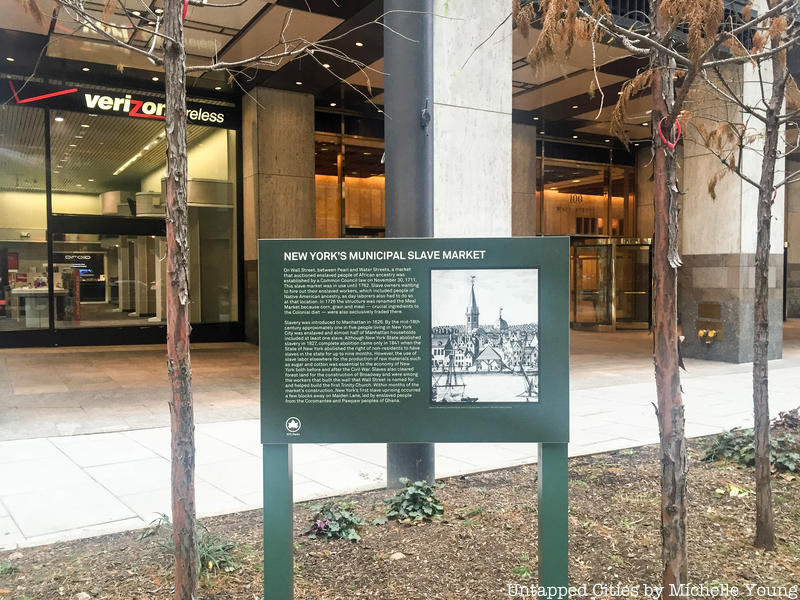Curfews for Slaves (1700s)
 Slave market marker at Wall Street and Water Street
Slave market marker at Wall Street and Water Street
Sometimes curfews were applied to a specific population in New York City. In the early 1700s, the city had quite a large slave population — 42 percent of New York’s households had slaves. On Maiden Lane in 1712, 23 slaves rose up in the New York Slave Revolt in protest of restrictions placed on them, such as needing to carry a pass and being unable to meet in groups of more than three. Strict curfew laws for slaves were in effect in the 1700s within NYC, according to A History of Negro Slavery in New York by Edgar J. McManus. Curfew regulations were often relaxed to permit married slaves to visit their spouses, yet the city’s slaves were said to often violate these curfew laws and “disturbed the town with their pranks and drunken brawls.” According to McManus, “most slaves preferred punishment of any sort to leading lives devoid of human contact,” so slaves would often break curfew laws peacefully.
The last slaves were freed on July 4, 1827 in New York City, almost forty years before the passage of the Thirteenth Amendment but it should be remembered that New York City’s businessmen, political leaders, and media industry were openly hostile to Abraham Lincoln and the efforts of the Union, a situation well documented in The City of Sedition: A History of New York City During the Civil War by John Strasbaugh.





